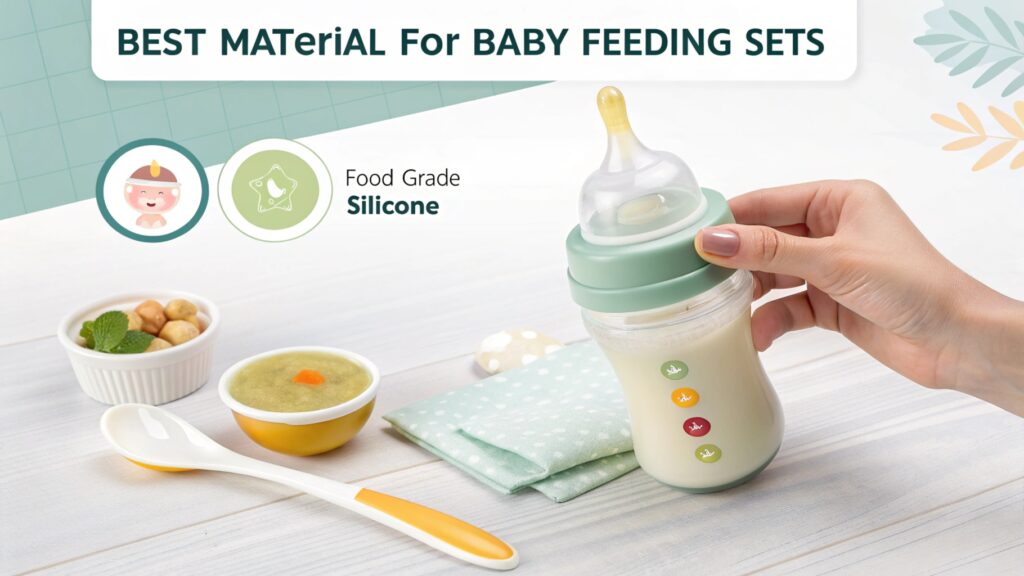
Parents always look for safe and durable materials when selecting feeding sets for their babies. The right material ensures both safety and functionality.
The best material for baby feeding sets is food-grade silicone, as it is non-toxic, durable, and easy to clean.
Understanding the pros and cons of various materials can help parents make informed decisions.
What material is best for baby feeding?
Feeding sets are available in various materials, but some stand out for their safety and practicality.
Food-grade silicone and stainless steel are the best materials for baby feeding due to their durability and non-toxic properties.
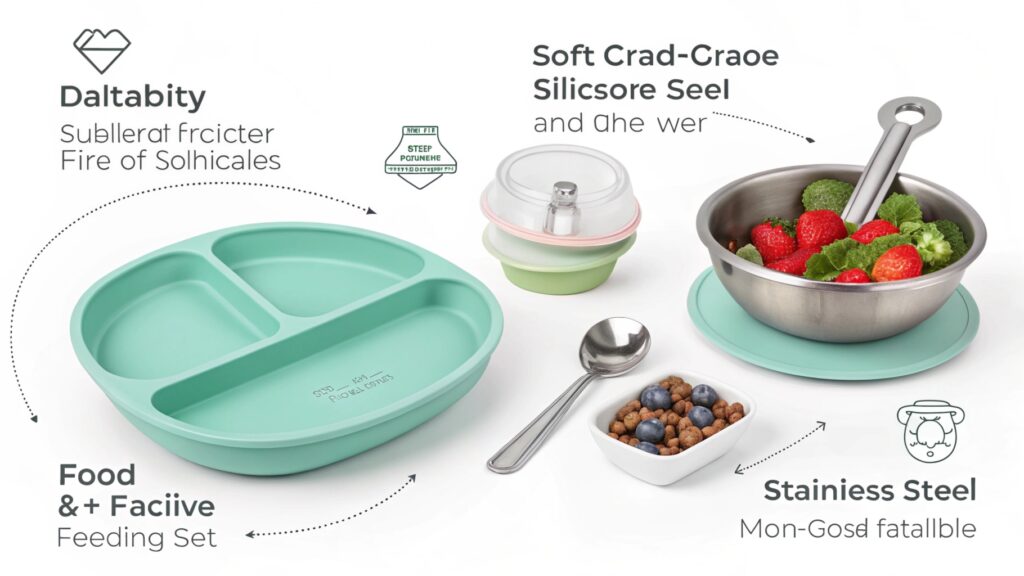
Dive Deeper: Comparing common materials
| Material | Pros | Cons |
|---|---|---|
| Silicone | Soft, flexible, BPA-free | Can absorb strong odors |
| Stainless Steel | Durable, non-toxic | Heavier for small babies |
| Plastic | Lightweight, affordable | Risk of BPA or microplastics |
| Bamboo | Eco-friendly, lightweight | Requires careful cleaning |
Silicone remains the most versatile option for its baby-safe design and ease of use.
Which material is best for baby food?
Choosing the right material for storing or serving baby food is equally important.
Glass and silicone are ideal for baby food storage because they are non-toxic and do not leach chemicals.
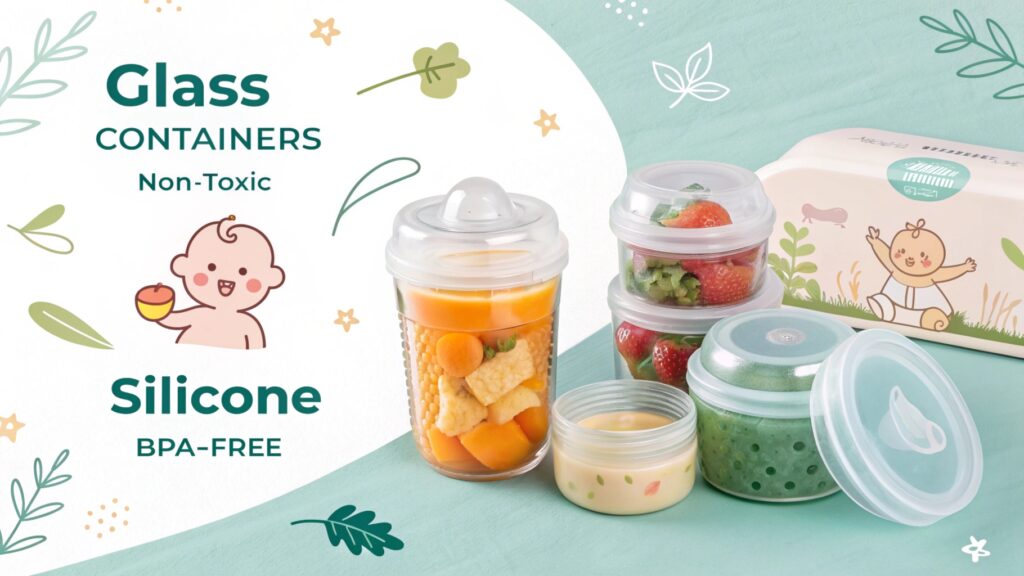
Dive Deeper: Why glass and silicone are preferred
- Glass containers are sturdy and resist staining.
- Silicone lids or bowls are flexible and easy to handle.
- Both materials can withstand high and low temperatures.
Are silicone baby utensils better than plastic?
Silicone and plastic are common materials for baby utensils, but one clearly outshines the other.
Silicone baby utensils are better than plastic because they are BPA-free, softer for gums, and more durable.
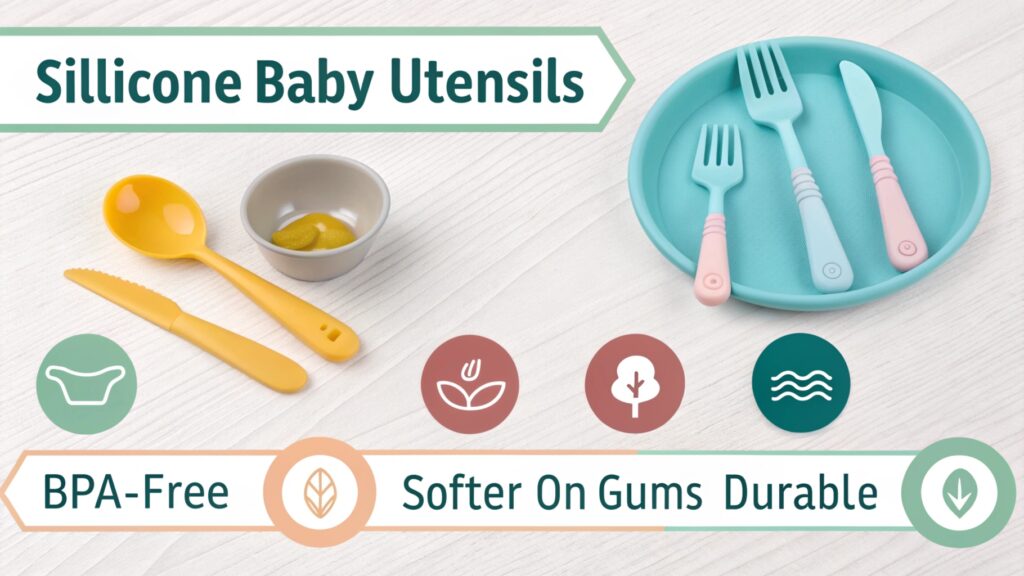
Dive Deeper: Key differences between silicone and plastic
- Plastic may contain harmful chemicals like BPA or phthalates.
- Silicone is heat-resistant and dishwasher-safe.
- Silicone is softer and safer for teething babies.
What is the best material for baby dinnerware?
Dinnerware materials should prioritize safety, durability, and ease of use for self-feeding.
Silicone and stainless steel are the best materials for baby dinnerware as they are safe, durable, and easy to clean.
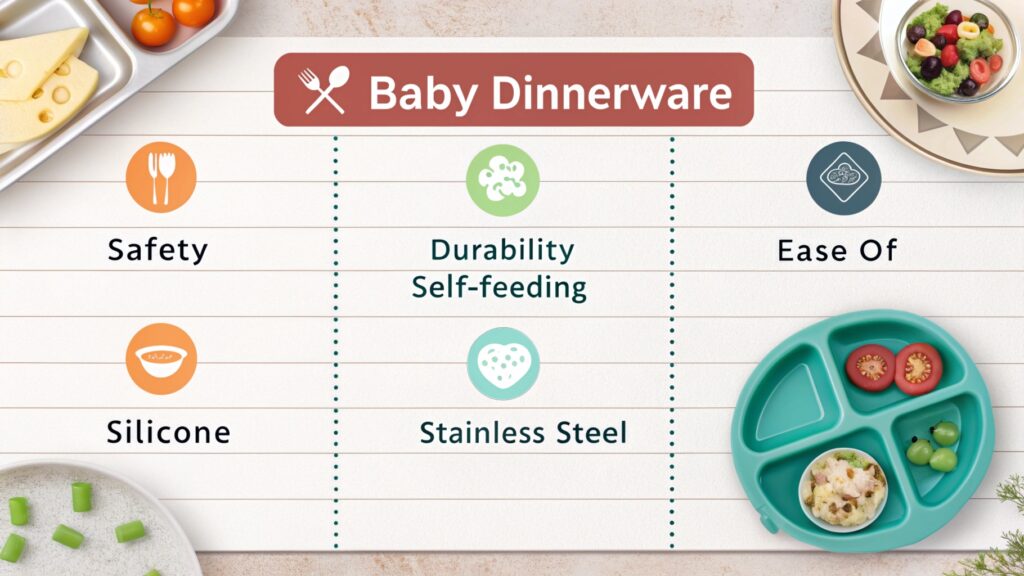
Dive Deeper: Features of ideal baby dinnerware
- Silicone suction plates prevent spills and are microwave-safe.
- Stainless steel plates are long-lasting and eco-friendly.
- Both materials meet food-grade standards for safety.
Is silicone or plastic better for baby food?
Parents often debate between silicone and plastic when choosing feeding accessories.
Silicone is better for baby food as it is non-toxic, heat-resistant, and free from harmful chemicals like BPA.
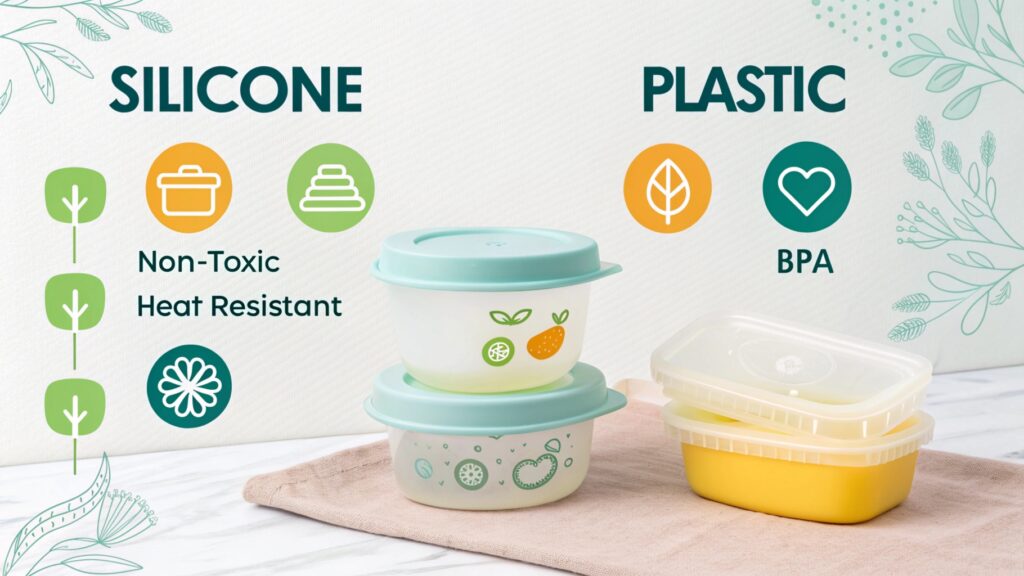
Dive Deeper: Why silicone is preferred
- Plastic can degrade over time and leach chemicals.
- Silicone is stable under high heat, making it suitable for sterilization.
- Silicone maintains its quality even with frequent use.
What material is safest for babies?
Safety is the number one priority when choosing baby feeding sets.
Food-grade silicone and stainless steel are the safest materials for babies due to their non-toxic properties and durability.
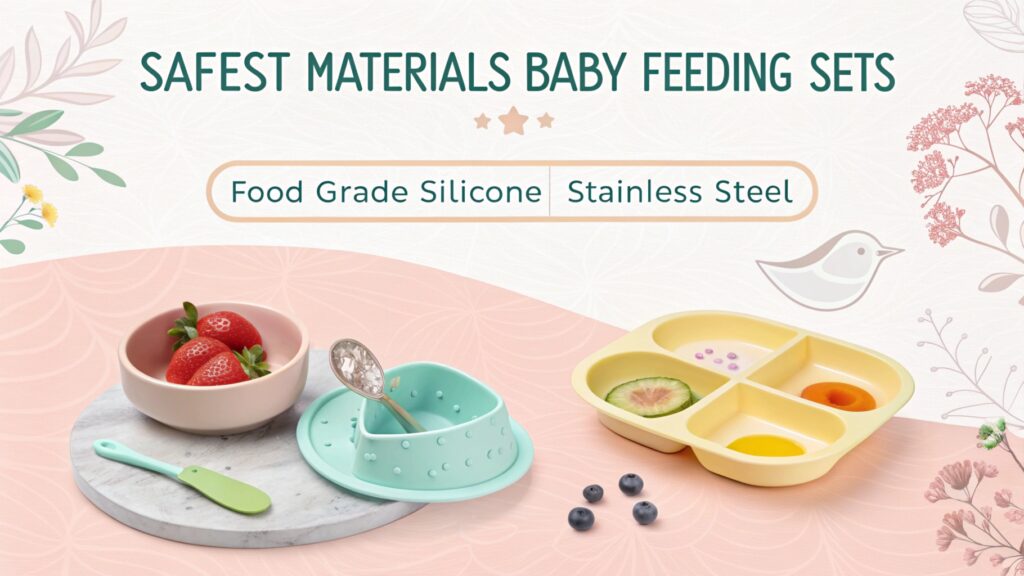
Dive Deeper: Ensuring safety in baby feeding sets
- Look for certifications like FDA, LFGB, or CE.
- Avoid materials with harmful additives like BPA or phthalates.
- Opt for durable, non-porous materials to prevent bacterial growth.
Conclusion
Food-grade silicone and stainless steel are the best materials for baby feeding sets, ensuring safety, durability, and practicality for everyday use.
